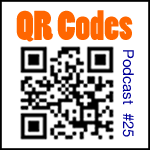Installing iPod touch Apps
 Tuesday, December 16, 2008 at 8:00PM
Tuesday, December 16, 2008 at 8:00PM IMPORTANT UPDATE: Apple now requires educational institutions to purchase paid apps through the App Store Volume Purchase Program. Read more about how this changes how paid apps are purchased and synced.
Installing software on iPod touch or iPhone is ridiculously easy. All software applications (known as "apps") can be found in the App Store section of the iTunes Store. Most people know this by now, but I should mention that iTunes works on Windows computers just as well as it works on Macintoshes. The App Store is organized much like the Music Store. Top apps are listed along the side. What's nice is that the App Store sorts out paid apps from free apps so you can limit yourself to just looking at the free stuff. Another nice thing: the App Store is also on the iPod touch itself! This means you don't even need to go through your desktop computer to install software!
 |
 |
|
| App Store in iTunes | App Store on iPod touch |
I find it easier to browse for software in iTunes than on the iPod's App Store. If you download software in iTunes, it goes into the Applications section of your iTunes Library. The next time you sync an iPod touch or iPhone, the software will be installed. To download software, you do need an iTunes account, which requires a credit card to be on file. About 25% of the software in the App Store is free of charge, but you still need a credit card on file to download free apps. A lot of good apps are indeed free, but I've found I like many of the paid apps better, particularly in the Education category. The good news is that apps tend to be priced between $0.99 and $2.99. That's a pretty good deal, especially considering that paid applications for Palm and Pocket PC are often in the $15 range.
Unlike installing paid software on Palm and Pocket PC, you don't enter a device I.D. or serial number to register an app. Instead, Apple uses a system of Digital Rights Management (DRM) called FairPlay. FairPlay is the same DRM iTunes uses to impose copyright restrictions on purchased music and videos. FairPlay limits you to installing an app from up to five authorized computers simultaneously. You get to decide which computers' iTunes you authorize: your personal laptop, home Mac, school computer, Windows netbook, etc. iTunes can be authorized to use multiple accounts, by the way. So I can authorize my MacBook to not only use my account, but my mom's and sister's at the same time. But, I only get to authorize my own account on up to five machines at a time.

What about authorizing an iPod? You don't! FairPlay's DRM allows you to copy the apps you've downloaded to an unlimited number of iPods. This is great for a classroom set of iPod touches because you can purchase an app for $1.99 and install it onto an entire class set of iPods. With Palm and Pocket PCs, you'd have to purchase a separate serial number for each and every device. Not with FairPlay. This is why I mentioned so many paid apps for math practice yesterday--a few bucks is a small price to pay when you can install the app onto so many iPods.
iTunes will let you sync an unlimited number of iPods to one computer. But, there might not be time to cycle through a class set of iPods with just one computer. That's when it's handy to have more than one computer authorized to install apps. Here's how to get apps installed on multiple iPods quickly:
- Download the app or apps on one classroom computer and sync with one iPod touch.
- Connect that iPod touch to another classroom computer. Don't sync the iPod as that will erase what you synced from the first computer. Instead, choose Transfer Purchases from iPod from the File menu.
- All apps from the iPod are copied to the computer and ready to sync to more iPods.
- Disconnect the iPod and connect to up to 3 more authorized computers to Transfer Purchases from iPod to those machines.
- Sync the rest of the iPods to the computers you just transferred to apps to. Note that in classrooms where syncing happens on more than one computer, it is important to have each individual iPod touch sync to the same computer every time. I suggest sticking a different colored dot on each computer. Stick dots on the iPods that match the computers they sync with to make it clear which device syncs with what computer.
 You can forgo syncing to install an app if you want to install it directly on the iPod itself. Just find the app in the App Store on the iPod and tap its Free or Buy button. If you have previously downloaded the app on another iPod or in iTunes, you'll get a message, "You have already purchased this item. To download it again for free, select OK." To install directly from the iPod's App Store, you need to input your iTunes account's password each time. That will get old if you have lots of iPods to install and I don't suggest sharing the password with students. In this case, installing by syncing with iTunes is your best bet.
You can forgo syncing to install an app if you want to install it directly on the iPod itself. Just find the app in the App Store on the iPod and tap its Free or Buy button. If you have previously downloaded the app on another iPod or in iTunes, you'll get a message, "You have already purchased this item. To download it again for free, select OK." To install directly from the iPod's App Store, you need to input your iTunes account's password each time. That will get old if you have lots of iPods to install and I don't suggest sharing the password with students. In this case, installing by syncing with iTunes is your best bet.
So far I've addressed syncing iPod that are part of a class set. This set cannot easily be used in another classroom with a different set of computers. If this set if used school wide, I suggest syncing/installing apps from a central location, like the Media Center. Otherwise you're dealing with deauthorzing iTunes in the first classroom so you can authorize more computers in the second. Note that deauthorzing does not delete the apps from the computer, it just prevents you from installing the apps on iPods and iPhones.
Also, since iTunes requires a credit card for purchases, you'll have to decide whose card number will be used. I would have no problem using my personal credit card as the apps are fairly cheap. Then I don't have to figure out how to use a school credit card and keep all that separate with my personal iTunes purchases. The apps are cheap, so it won't amount to much--though I can see myself going overboard and having a dollar here and there add up quickly. Something to think about: if you ever leave the school, then you probably don't want your iTunes account associated with the school computers anymore, which would leave those iPods without software.
What if you aren't dealing with a class set? What if you are inviting students to bring their own iPod touches and iPhones? In short, it's messy. If they sync with a classroom computer to install apps, it will erase the apps they already have from their home computers. In this case, I suggest sticking with free software. If there's an app you'll use in class, have students install it from the App Store right their own devices. Student will need their iTunes' account password to install any app, even free ones.
So, Apple's FairPlay DRM does put some significant (and complicated) restrictions how you install and manage iPod touch software. But, it's very significant that you can install paid apps to any number of iPods and iPhones. That's definitely a plus for class sets of iPods!
12 Days of iPod touch continues tomorrow with animation apps.






Reader Comments (8)
> it's very significant that you can install paid apps to any number of iPods and iPhones. That's definitely a plus for class sets of iPods!
You can't really believe that this sort of loophole will remain open for very long. Can you?
I know! It seems too good to be true. But Apple's DRM has had this loophole for years--previously with music, audiobooks, and movies. Now with apps.
Apple loves to keep it's iTunes store and DRM as simple as possible, so I just don't see them mucking things up by trying to charge for every iPod synced to one computer. My worry is that their Terms of Service will be changed to say that schools and institutions should pay more somehow.
My experience is that managing the ipods is just an added challenge for teachers and technology specialists. I started DevelopEase (www.developease.com) to help promote handhelds in the classroom especially for students with special needs. We are now starting to offer our services for setting up and maintaining ipods for entire schools. I think this will really help teachers and administrators get on board. They only have to focus on using them in the classroom and not managing them.
While you can technically install free and paid apps on any number of handhelds from one computer/iTunes account, the iTunes Terms & Conditions mentions a 5 device limit. This had been a change since I wrote this post in 2008. It used to state 5 computers, not 5 devices. See the text from the current T&C:
10. Purchase or Rental of Apple Content
iii) You shall be authorized to use the Products on five Apple-authorized devices at any time, except in the case of Movie Rentals, as described below.
The above is under a section for "Apple Content" and from reading through all the legal mumbo-jumbo, much of which I admittedly don't understand, "Apple Content" might not include 3rd party apps. Or maybe that's wishful thinking.
Anyhow, I have checked multiple times with different Apple representatives and they have each assured me that it is ok to install an app on more than 5 iPod touches. I've also been told that it's "ok for now" since they don't yet have a way for schools to pay more than once for an app.
The T&C does say that a developer can have their own license agreement with a customer (see below). So perhaps schools can contact developers of apps they'd like to sync to class sets and ask permission to use their apps on more than 5 devices. Or, the developers could clearly state on apps intended for classroom use that it is acceptable to use on more than 5 devices.
Your license to each Product that you obtain through the Service is subject to the Licensed Application End User License Agreement set forth below, and you agree that the terms of the Licensed Application End User License Agreement will apply to each Apple Product and to each Third Party Product that you license through the Service, unless the Product is covered by a valid end user license agreement entered into between you and the licensor of the Product (the “Licensor”), in which case the Licensor’s end user license agreement will apply to that Product.
It is possible to create an iTunes account that isn't linked to any credit or debit card. Simply chose that in the options offered when you set up the account. If you then need to purchase apps you can use an iTunes card.
There is no way I would use my personal iTunes account linked to my bank account in a school situation, particularly with large numbers of iPod Touches. Too risky.
I have two ipods in the house and one computer. Both ipods have there own account. After I synced them to one computer, in one itunes window, my daughter ended up with all her brothers apps and can no longer open her account via her ipod without using her brothers password (which he won't give her) any suggestions?
Ann, I suggest choosing Authorize This Computer and inputting your daughter's iTunes account info. Also do this for the other account. You should be able to use apps installed from either account on iPods synced with that computer now.
Can you tell me if there is a way to project the apps from one ipod touch using a LCD projector? I want to be able to go over driver ed quiz from apps with the class.